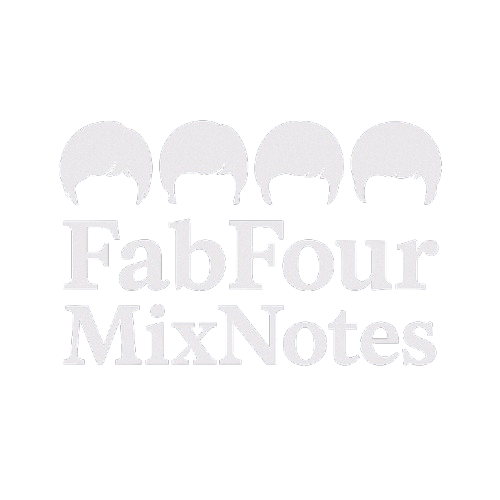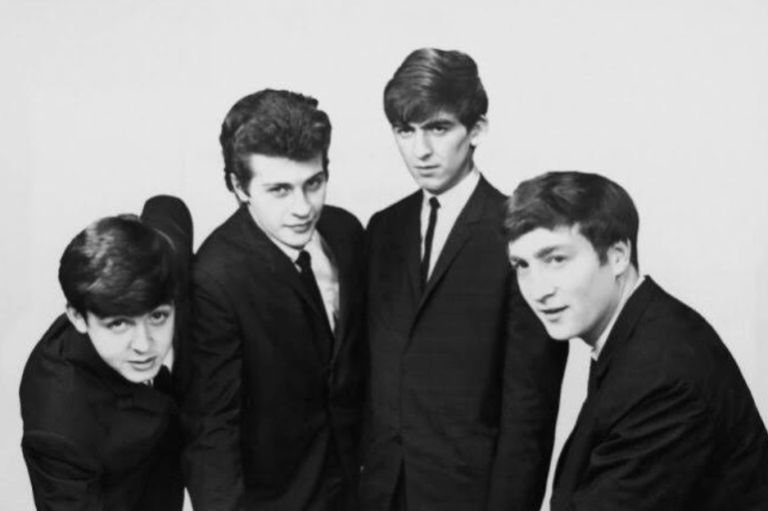Location and Time
EMI Studio 2
10:00am – 1:00pm
Songs
Love Me Do
P.S. I Love You
Please Please Me (demo)
Personnel
John Lennon – guitar, vocals
Paul McCartney – bass, vocals
George Harrison – guitar
Ringo Starr – maracas. tambourine
Andy White – session drummer
George Martin – Producer
Ron Richards – Assistant Producer
Norman Smith – Balance Engineer
Chris Neal – Assistant Engineer / Tape Operator
Instruments and Amplification
The following list is according to Jerry Hammack in The Beatles Recording Reference Manual: Volume 1, along with other sources listed below.
- 1957 Gretsch G6128 Duo Jet electric guitar (George Harrison)
- 1598 Rickenbacker 325 Capri with Bigsby B5 vibrato (John Lennon)
- 1960 Fender Narrow Panel Deluxe (Tweed) 15W guitar amplifier (John Lennon) *
- 1961 Hofner 500/1 bass guitar (Paul McCartney)
- 1962 JMI Vvox AC30 / 6 Twin (John Lennon, George Harrison)
- Duo Jet or Country Gentleman guitar (George Harrison) **
- Gibson GA-40T, 16W guitar amplifier (George Harrison)
- Gibson J-160E acoustic guitar (John Lennon, George Harrison)
- Hohner harmonica (John Lennon)
- Leak Point One preamplifier (Paul McCartney, temporarily provided by EMI engineers) *
- Leak TL12 bass amplifier with Tannoy Dual Concentric 15″ speaker (Paul McCartney, temporarily pulled from the Echo Chamber One due to Paul’s noisy amp)
- Ludwig Black Diamond Pearl 56, Buddy Rich Super Classic (Andy White) *
- 14″ x 22″ bass drum
- 9″ x 13″ rack tom
- 16″ x 16″ floor tom
- 14″ x 5.5″ snare
- Cymbals
- 20″ ride
- 18″ crash
- 14″ hi-hats
- Maracas
- Tambourine
*Based on known gear but not fully verified for this session.
**Jerry Hammack lists 1962 Rickenbacker 425 as George Harrison’s guitar. Other sources show he bought the guitar in 1963. For this reason we listed he played either the Duo Jet or Country Gentleman guitar.
Studio Gear
This is the standard setup used in the 1962 to 1964 era, unless noted.
The following list is according to Jerry Hammack in The Beatles Recording Reference Manual: Volume 1, along with other sources listed below.
Control Room
- REDD.37 valve console
- BTR-2 mono tape machine
- BTR-3 twin-track tape machine
- Altec 605A monitors
- EMI RS141 Leak TL, 25 Plus amplifier
- EMI RLS10
Outboard Signal Processors
- EMI RS114 Limiter
- EMI RS124 Altec Compressor
- EMI RS127 Presence Box
- EMI RS144 4-Way Mixer / Premix
- EMI RS92 Neumann Mic Equaliser
Effects
- Echo Chamber
- STEED send tape echo, echo delay
Microphones
- Neumann U 48 (vocals, electric guitar amplifiers, acoustic guitar, acoustic and electric keyboards)
- Neumann U 47/48 (vocals, electric guitar amplifiers, acoustic and electric keyboards)
- Neumann KM 54 (electric guitar amplifiers)
- STC 4038 (drum overhead)
- STC 4033-A (bass drum)
- STC 4033-A (bass guitar amplifier)
Session Notes
Mixing Techniques
- P.S. I Love YouI has Superimpositions with McCartney on lead vocals, Harrison and Lennon on backing vocals.
- Love Me Do features Superimpositions with McCartney and Lennon on vocals, handclaps, and harmonica.
- Please Please Me has Superimpositions with McCartney and Lennon on vocals, Harrison on backing vocals.
Additional Notes
- This followed by their previous studio appearance on 4 September 1962.
- Following the underwhelming 4 September session, producer George Martin brought in session drummer Andy White to re-record Love Me Do and P.S. I Love You. This was a difficult moment for Ringo Starr, who had officially joined the band just weeks earlier. He played tambourine on Love Me Do and maracas on P.S. I Love You, while White handled the drum kit.
- This version of Love Me Do, with Andy White on drums and Ringo on tambourine, became the standard single release in most countries, replacing the earlier 4 September take.
- P.S. I Love You was tracked in full during this session and is notable for its early use of superimposed vocals and percussion, a technique the Beatles and EMI engineers would refine in later recordings.
- A demo of Please Please Me was also attempted during the session. George Martin felt the song had potential but suggested speeding it up and revisiting it later – setting the stage for their first major breakthrough in November.
- Despite the tension surrounding Ringo’s role, this session produced The Beatles’ first official single pairing, marking a major milestone in their studio career.
Fab Four Mix Notes
Working within Constraints: Recording The Beatles on September 11, 1962
Media
Sources
Books
All the Songs: The Story Behind Every Beatles Release (Jean Michel Guedson, Philippe Margotin)
The Beatles Recording Reference Manual: Volume 1 (Jerry Hammack)
The Beatles Recording Techniques (Jerry Hammack)
The Complete Beatles Recording Sessions (Mark Lewisohn)
Here There Everywhere: My Life Recording the Beatles (Geoff Emerick)


